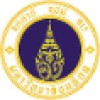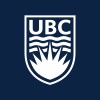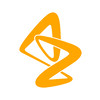
Remote Ischemic Conditioning for Acute Moderate Ischemic Stroke
StrokeThe current treatment based on evidence-based medicine for acute ischemic stroke mainly includes reperfusion (intravenous thrombolysis, mechanical thrombolysis), anti-platelet and stroke units. About 1/3 patients can obtain good prognosis through intravenous thrombolysis. Good prognosis can be gotten from about 50 percent of patients with big artery disease by mechanical embolization. However, only a small proportion of the population can be treated with restoration perfusion in the time window. The main purpose of antiplatelet therapy is to prevent the recurrence and progression of stroke, and stroke unit is a kind of management mode. How to improve the neurological function of patients has been a hot and difficult problem in clinical practice. A large number of basic and clinical studies have proved that remote ischemic conditioning (RIC) has protective effect on ischemic stroke. Hahn et al showed that RIC could play a neuroprotective role in cerebral ischemia-reperfusion injury in MCAO model. Other studies have also confirmed that preconditioning RIC has a neuroprotective effect on cerebral ischemia in animal models. One open label study by Hougaard et al shows that RIC can improve the NIHSS score in acute ischemic stroke patients. One recent study found that 300 consecutive days RIC therapy for the patients with symptomatic intracranial atherosclerotic stenosis significantly reduced the recurrence rate of stroke, improved the mRS score and recovered the blood flow in the lesion site. Furthermore, several studies have also shown that RIC can not only improve the neurological function of patients with cerebral infarction after intravenous thrombolysis and mechanical thrombolysis, but also protect the secondary brain injury after carotid stenting. These results suggest that RIC has a neuroprotective effect on ischemic stroke and deserves further study. Based on the above discussion, this study aims to explore the efficacy and safety of RIC in the treatment of acute moderate ischemic stroke.

The Effect of The Five-Session Dual-tDCS On Lower-Limb Performance in Sub-Acute Stroke
StrokeIschemicThe aim of the present study is to determine the effect of the five-session dual-tDCS combine with physical therapy on gait performance, balance and lower limbs muscle strength in patients with subacute stroke.

Telerehabilitation With Aims to Improve Lower Extremity Recovery Post-Stroke
StrokeStroke10 moreThe purpose of this study is to examine the feasibility and effectiveness of a lower extremity telerehabilitation protocol with aims to improve lower extremity recovery among community-living stroke survivors across Canada.

THE IMPACT- 24M TRIAL (IMPlant Augmenting Cerebral Blood Flow in Mild Strokes Trial 24 Hours From...
Ischemic StrokeStudy Population: Subjects with Mild Acute Ischemic Stroke in the anterior circulation within 24 hours from onset. Study objectives: Identify the personal stimulation level for each patient based on physiological biomarkers Identify improvement in stroke symptoms during ISS treatment at the personal stimulation level

Combined Conventional Speech Therapy and Functional Electrical Stimulation in Dysphagia Following...
DysphagiaOropharyngeal2 moreThis study will evaluate the effectiveness of conventional speech therapy associated with functional electrical stimulation in patients with dysphagia after ischemic stroke. Included patients will be divided into two groups, where in the intervention group the speech therapy is associated to functional electrical stimulation, and in the control group, the patients will receive the conventional speech therapy with electrical stimulation Placebo with intensity 0hz.

THALES - Acute STroke or Transient IscHaemic Attack Treated With TicAgreLor and ASA for PrEvention...
Acute Ischaemic StrokeTransient Ischaemic AttackStudy to investigate if the study drug ticagrelor and ASA is more effective than Placebo (inactive tablet) and ASA in preventing new stroke events

Perinatal Arterial Stroke Treated With Stromal Cells Intranasally
Perinatal Arterial Ischemic StrokeNeonatal StrokeThis study will assess safety and feasibility of bone marrow-derived allogeneic MSCs, administered by the nasal route, in neonates who suffered from PAIS.

High Flow Oxygen Therapy and Acute Ischemic Stroke
StrokeHypoxemia is common in acute ischemic stroke and associated with neurological deterioration and mortality. However, the benefit of oxygen therapy is controversial. Severity of stroke may affect the benefit of oxygen supplementation. Abnormal breathing patterns are commonly found among stroke patients and may increase the risk of hypoxemia. High flow nasal cannula (HFNC) has several advantages from controllable fraction of inspired oxygen (FiO2), reduction of nasopharyngeal resistance and positive end expiratory pressure effect. In this study, we aimed to assess the therapeutic effect of HFNC on oxygen desaturation index (ODI) and neurological outcomes in stroke patients with moderate and severe severities, compared with no and low flow oxygen supplementation.

Efficacy Argatroban in Ischemic Stroke With Early Deterioration (EASE)
Acute Progressive Ischemic StrokeAcute ischemic stroke (AIS) has the characteristics of high morbidity, high mortality, high disability rate and high recurrence rate. Progressive cerebral infarction (PIS) is a subtype of AIS, accounting for 10% - 40%. Because of the gradual aggravation of neurological deficit symptoms, it has a higher rate of disability and death, which brings heavy mental and economic burden to families, society and the country. The progress of acute cerebral infarction is generally within 6 hours to 1 week after the onset of the disease. At present, it is considered that thrombus prolongation is one of the important pathogenesis of PIS. Heparin can reduce the incidence of post-stroke embolism, but its benefits are offset by the risk of hemorrhage due to the high risk of hemorrhage. The 2013AHA guidelines in the United States do not recommend it as a routine anticoagulant therapy. Therefore, reducing the risk of bleeding is the key to the anticoagulation therapy of PIS. Argatroban is a new thrombin inhibitor. Its mechanism of action is to bind and inactivate thrombin (factor Ⅱ a) directly.Compared with traditional anticoagulants, argatroban not only has the advantages of good anticoagulant effect and rapid onset, but also has high safety. Therefore, this study aims to verify the clinical efficacy of Argatroban in the treatment of PIS in a large population. In this study, 628 patients are expected to be enrolled into the study group. The experimental group and the control group are selected by dynamic random method. Both groups are given standard medical treatment, including routine antiplatelet, blood pressure control, statins to stabilize plaque, etc. The control group is only given standard medical treatment. In the experimental group, Argatroban is used on the basis of standard medical treatment. Both groups are treated for 7 days, and the second-class prevention standard medical treatment is given from the 8th to the 90th day. The main outcome measure is the good prognosis rate at the third month after PIS. The good prognosis was defined as the modified Rankin Scale (mRS) ≤ 3.

Endovascular Stroke Treatment Only (ESTO) Trial
Acute Ischemic StrokeThe specific aims of this study are to: Determine whether the endovascular treatment (mechanical thrombectomy) alone without using intravenous (IV) recombinant tissue plasminogen activator (rt-PA) in acute ischemic stroke patients demonstrates "promise" or a lack thereof ("futility") in deciding what would be the next phase III trial. Determine the proportion of subjects with slight or no disability (a modified Rankin score (mRS) of 0-2) at 3 months after receiving endovascular treatment (mechanical thrombectomy) alone without using IV rt-PA and compare with historical controls who were treated with IV rt-PA to identify (or lack of) futility. Determine the proportion of subjects with improvement in the National Institutes of Health Stroke Scale (NIHSS) score of ≥8 points or achieving a score of 0-1 at 24 hours after the onset of stroke among subjects with acute ischemic stroke after receiving endovascular treatment (mechanical thrombectomy) alone without using IV rt-PA. Determine the proportion of subjects with angiographic recanalization on post procedure angiogram according to modified Thrombolysis in Cerebral Infarction (TICI) perfusion flow categories among subjects with acute ischemic stroke after receiving endovascular treatment (mechanical thrombectomy) alone without using IV rt-PA. Determine the proportion of subjects with treatment-related serious adverse events (SAEs) within 72 hours and development of symptomatic intracranial hemorrhage at 27 ±3hrs post treatment among subjects with acute ischemic stroke after receiving endovascular treatment (mechanical thrombectomy) alone without using IV rt-PA.
